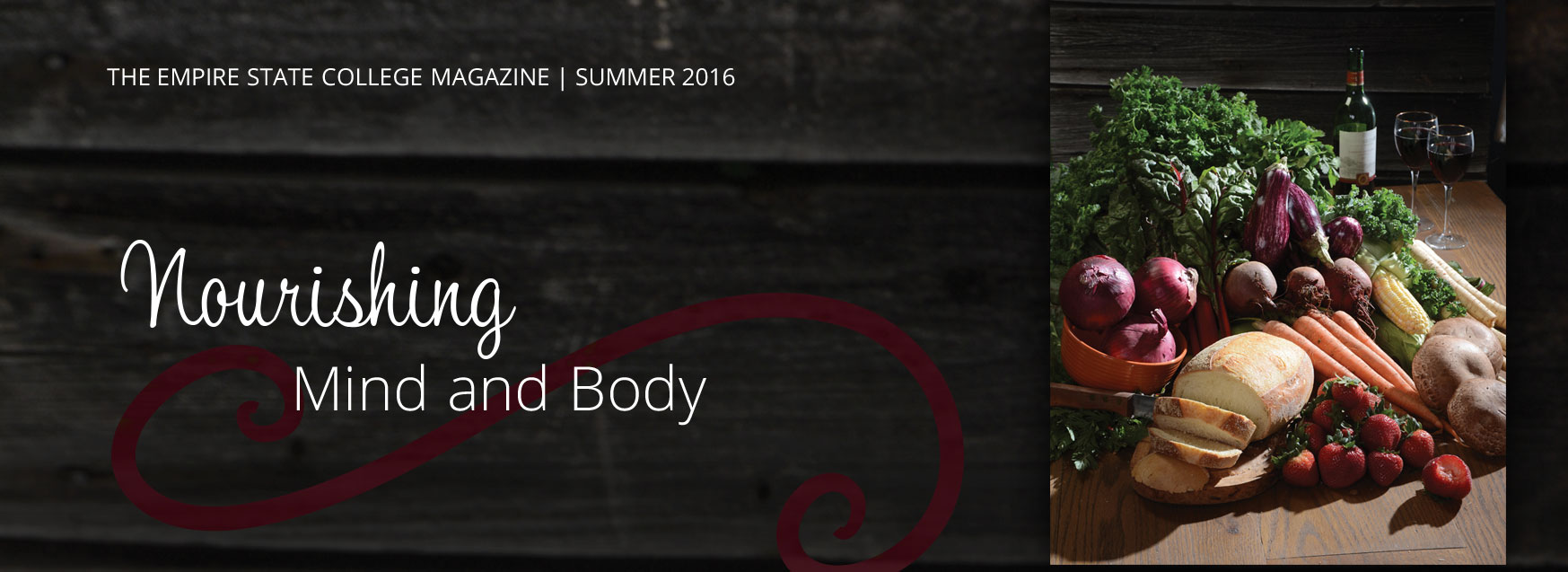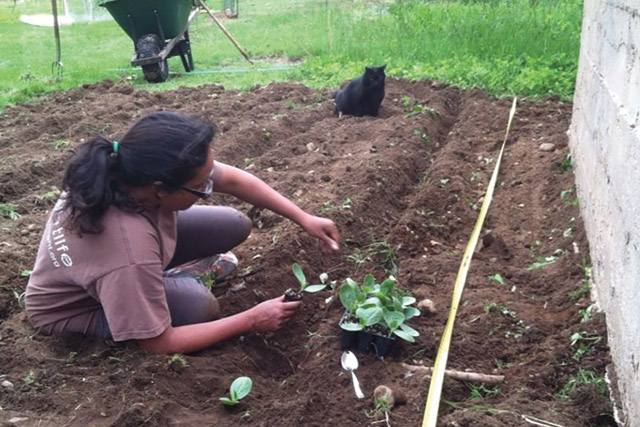
Getting Your Hands Dirty: A True, Growing Experience
by Himanee Gupta-Carlson

Five years ago, my husband Jim Gupta-Carlson and I made a down payment on an 1840s farmhouse with three acres of land on Squashville Road in Upstate New York’s Saratoga County. We had little awareness of what that would mean. The land was a desert, decimated by dirt bikes, chemical fertilizers and virtually no care. But there was a barn, southern exposure to open space, and hope. We dubbed our new place Squashville Farm.
Today, we are raising more than 100 chickens. We are getting ready to brood ducks and just celebrated the births of three healthy goats (two more of our does are pregnant and due as I write). We raise about 80 percent of the vegetables we eat and slowly are bringing back to life the apple and pear trees that a previous owner planted in honor of his grandchildren, but neglected.
I have a full-time job as a professor, so my husband does the bulk of the work. Still, growing food is a partnership to which we both fully commit.
When we first looked at our three acres of land, our neighbors advised us to hire a landscaper or purchase a tiller to bring the earth back to life. We could not afford such extravagances, so we chose instead to try working with our hands. We found farmers who were willing to give us bags of goat manure, if we filled them ourselves. We found a sheep farmer who brought us truckloads of compost for $140 a dump. We read up and talked with vegetable farmers and learned that potatoes – by virtue of needing to be hilled – could help replenish topsoil, that beans and squash were good sources of green manure, and that if we just kept working the land with our hands, good things would follow.
Over five years, I have learned to live with the rhythm of seasons, and that that rhythm is irregular. A mild winter in 2015-16 raised hopes for an early start to spring planting, hopes that were curbed by repeated frosts through mid-May. Asparagus spears that began to poke their way out of the ground in late April shriveled and went limp.
Yet, the irregularities of rhythm also produce surprises. For instance, last summer as I worked the soil of Squashville Farm, I found myself pondering what was to be learned from digging one’s hands deep into soil? What might help the people with whom I interact feel healthier and less hungry, both in a literal and a figurative sense? What might create new nourishment, new value, and new knowledge? What was it that I was learning from noticing a beetle famous for destroying tomato plants ignoring those plants in favor of a neglected weed? What might be gained from appreciating the fact that when I pried open an accidentally picked okra that had not quite matured, I discovered that furled inside its outer skin was the flower from which it had fruited? I know there is knowledge – perhaps even wisdom – in these moments. How to articulate it so that others can comprehend the real fruits of such labor is an open question.
The soil in the adjacent photo might appear to be tilled. It is not. It was hand-turned. We had hoped eventually to purchase a tiller, until we learned – via books on soil growth provided to my husband via the granddaughter of a longtime farmer – that it actually was better for soil health not to till. Tilling evens out soil and makes it look pretty. In the process, it can kill the worms that reside deep in the earth and keep it alive and fertile. Hand turning is hard and laborious. And it means that your planting fields are uneven and sometimes besieged by weeds.
But hand turning also means that your soil is alive and full of hope. Today, we plant to feed ourselves, and others. We sell eggs, seasonal vegetables and, hopefully, meat to a network of friends and colleagues, as well as at a farmers market in our community. The soil is alive and prospering, and with it are we.
Himanee Gupta-Carlson is a mentor and area coordinator of Historical Studies at the college’s Center for Distance Learning. Her teaching and research interests include South Asian Americans, hip hop as a community-building practice and local farming and food.
Photography by Jim Gupta-Carlson